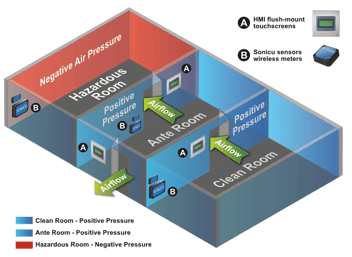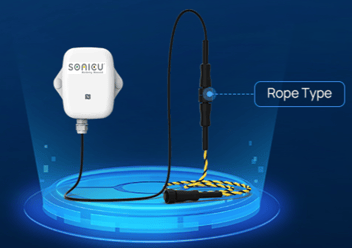Protecting the irreplaceable: Fertility clinic wireless temperature monitoring
The recent back-to-back failures at two U.S. fertility clinics that may have cost thousands of frozen human embryos have been labeled “beyond stunning” by a reproductive technology expert.
That two apparently unrelated breakdowns could occur in separate clinics some 2,500 miles apart on the same day exposes both the wonder and the fragility of our technology.
On March 4, temperature unexpectedly rose inside a liquid nitrogen storage tank at Cleveland’s University Hospitals Ahuja Medical Center fertility center “compromising” up to 2,000 eggs and embryos, according to news reports.
The New York Post reported that “[o]n Sunday morning, embryologists who arrived at the center were alerted by an alarm that the temperature of the tank had increased,” according to a hospital statement. (Emphasis supplied.)
Later, the Washington Post noted that temperatures increased at the top of tank but stayed at proper levels at the lower portion of the tank. That malfunction occurred sometime between Saturday afternoon and Sunday morning when the facility was not staffed.
That same day at Pacific Fertility Clinic in San Francisco, a senior embryologist noticed that the nitrogen level in a storage tank was “very low” during a “routine check of the tanks” that occurred "toward the end of the day," according to ABC News. (Emphasis supplied.)
Unfortunately, it appears embryologists at AMC in Cleveland were alerted to the temperature excursion only after they arrived at the facility, and the low level nitrogen discovery in San Francisco was made by a during a routine tank check.
Three concerns stand out immediately from these incident reports: the limitations of local alarming, the necessity of multi-level tank monitoring and the urgency for real-time data.
Local alarms, or on-premises alarms, are only beneficial if someone is present to hear them and respond. Absent a staff presence, a local alarm is meaningless.
Sonicu's cryogenic and ultra-low temperature monitoring technology with advanced Smart alarming avoids the constraints and flaws inherent in purely local alarming to improve protection at fertility clinics, animal research facilities, cryogenic labs and health systems across the country where irreplaceable embryos and bio-samples are stored.
Sonicu Smart alarming sends messages via text, email or phone call to any location at any time. Moreover, alarm recipient lists can be customized and tiered for specific circumstances, conditions and response needs.
Additionally, Sonicu Smart alarming can be individually customized to user-set time and temperature buffers and thresholds that ensure ample lead time for an appropriate response.
The Cleveland incident also emphasizes the necessity of monitoring the dewar at multiple levels. Though embryos at the bottom of the malfunctioning tank may have been preserved by the cooler temperature there, those at the tank's warmer top level may have been compromised.
Sonicu's digital cryogenic probes can be configured to different lengths to monitor multiple levels of a dewar. When paired with an MVP 440 Temperature Meter, the entire tank can be monitored for continuous protection throughout the entire storage area.
Finally, the necessity for real-time temperature data cannot be overstated. Routine checks are fine, but what happens between them can be devastating and insurmountable.
Sonicu's cloud-based software platform provides real-time data that is accessible from anywhere, 24/7, making temperature and other critical information constantly available.
According to the Washington Post’s report, many fertility clinics still use storage tanks that require manual cryogen filling, and more disquieting, no industry-wide standard exists for alarming protocols.
What’s more, there is currently little in the way of federal oversight for tank monitoring and inspection, although the College of American Pathologists does offer laboratory accreditation for fertility storage facilities.
As a result, it’s on the industry to learn about and incorporate the latest monitoring and alarming technology.
Sometimes it’s the small things – universal smart alarming, complete dewar monitoring, constant data access - in a complex scheme that make the most difference, and any solution that prevents a catastrophic failure is a big deal.
Since there is no way back from such a stunning catastrophe, the only sure remedy is not to get there in the first place.




